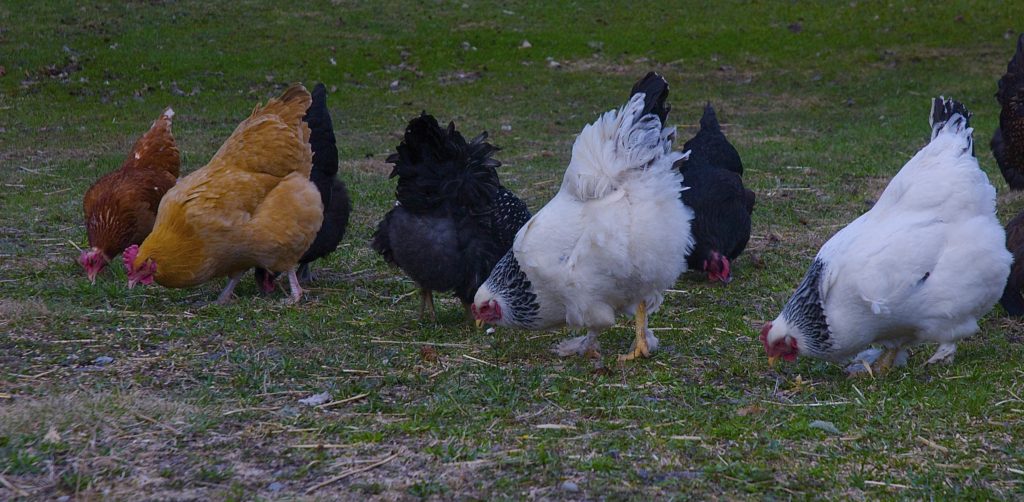What are the best breeds of meat chickens?
If you’re looking to raise your own meat, one of the most popular options for small homesteads or backyard farms are chickens. But before you start your flock, take a moment to learn about the different breeds of meat chickens.

Chickens that are raised specifically for meat are commonly known as broilers, and they are very different from their egg-laying counterparts.
“There is a huge difference,” according to Dr. Colt Knight, assistant professor with the University of Maine Cooperative Extension and Maine state livestock specialist. “If the goal is to have a meat-producing bird, raising an egg layer is a terrible idea.”
For one thing, Knight said, egg-laying hens put on weight at a much slower rate than a broiler.
“By the time an egg layer is big enough to consider eating, she’s old enough that the meat would be tough and stringy,” Knight said. “But with a broiler, you end up with a big, healthy meaty bird in a fraction of the time.”
Bred to mature quickly
While egg-laying hens have been bred over generations to produce a maximum number of eggs over their lifespan, today’s broilers have been bred to go from fuzzy chick to freezer-ready in a matter of several weeks.
The industry standard, Knight said, is the Cornish Cross. This is a chicken created for the commercial meat chicken market by crossing a Cornish chicken with a White Rock chicken. It’s also a popular breed for backyard chicken flocks.
“You can have a mature Cornish Cross, ready for slaughter, in just 35 days,” Knight said. “They can grow even quicker than that, which did cause problems.”
Those problems were birds that put on muscle and fat faster than their skeletal systems could handle it.
“People were getting chickens with mobility issues,” Knight said. “They were growing so fast, their legs could not support them and [the legs] would even break.”
In recent years the commercial breeders of Cornish Cross chickens have modified the breed to grow a little slower to accommodate the increase in body weight.
“But keep in mind, according to the [broiler] industry, ‘slower’ just means a couple of days,” Knight said. “So it’s still a pretty fast growth rate.”
The benefit to a fast-growing meat bird is the limited time needed to raise a food-producing chicken.
“The less time the bird is alive, the less time you need to spend tending it and the less you will spend on feed,” Knight said. “This means a better return on your investment.”
Heritage breeds
Cornish crosses are by no means the only meat chickens available to today’s farmers or homesteaders.
There are a variety of heritage breeds, or what Knight calls “freedom rangers” from which to select. As long as you don’t mind putting in some extra time to get a mature bird.
“These freedom rangers grow at a much slower rate than the Cornish Cross,” Knight said.
On average, a freedom ranger takes twice as long to mature than the Cornish Cross.
“For people looking to raise chickens and make a little bit of money selling them, a freedom ranger is not the best option,” Knight said. “They may like the idea of those birds, but they often like money more.”
Because they take longer to mature, to get a return on investment if selling freedom rangers or heritage breeds, you need to charge enough to cover the costs of raising them. That can mean asking upwards of $30 or more, per bird. And that can be more than a consumer wants to pay.
Farm-raised Cornish Cross birds, on the other hand, can be sold for around $20 each, and allow the small scale breeders to realize some profit, Knight said.
Other breeds
The Jersey Giant — This broiler is slow-growing and reaches 13 pounds at maturity in about 16 weeks. These are calm and docile chickens, though the males can be a bit aggressive. The hens lay large brown eggs which can be enjoyed before the hens are butchered at maturity.
The Bresse — This bird, with its bright blue feet, is regarded as the best tasting meat chicken in the world. A Bresse reaches a mature weight between five and seven pounds in about 20 weeks. While they do not produce a lot of meat per bird, that meat is very tender and flavorful.
The Orpington — This is another meat bird with a reputation for tender and flavorful meat. Orpingtons grow up to 10-pounds in 18 to 24 weeks. A female Orpington can lay up to 200 eggs a year, making them a nice dual-purpose member of your flock.
Double duty
Still, based on his experience, Knight is not a fan of the dual-purpose chicken.
“These are billed as ‘dual-purpose’ birds,” Knight said. “But I really don’t find them as good for either eggs or meat.”
When raising chickens, Knight recommends deciding what you want — eggs or chickens — and then get a breed-specific for that purpose.
“If you are looking for chickens you can take pretty pictures of and you love to talk about heritage breeds or these slower-growing birds, by all means, raise those,” Knight said. “But if you are looking for a straight meat bird that grows quickly with good meat, raise the Cornish Cross.”
